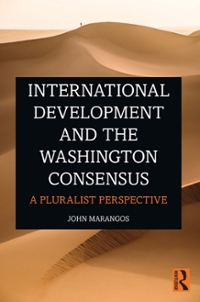Question
Suppose that in 2002, the price levels in the United States and Australia were 100. By 2006, the price level in the United States has
Suppose that in 2002, the price levels in the United States and Australia were 100. By 2006, the price level in the United States has increased to 190, while the price level in Australia has risen to 150. Suppose the nominal exchange rate between two countries in 2002 was $1USD = $1.6AUD. Round your answers to 2 decimal places, if applicable.
(i) Find the inflation rate of the United States and the inflation rate of Australia, respectively
(ii) Find the 2002 real exchange rate, from the perspective of Australia
(iii) What must be the new nominal exchange rate in 2006 if the real exchange rate had remained constant at the 2002 level (from the perspective of Australia)?
(iv) Suppose Australia had a fixed exchange rate system against the US dollar. The initial nominal exchange rate in 2002 was fixed. Did Australia experience a real exchange rate appreciation or depreciation? Explain
(v) Explain why you would expect Australia's net exports to rise or fall as a result of (iv)
(vi) Explain why the Australian dollar is overvalued or undervalued
(vii) Consider your answer in (ii): Explain whether the Purchasing Power Parity holds or does not hold
(viii) Briefly discuss two reasons why the Purchasing Power Parity may not hold when tested with data
Step by Step Solution
There are 3 Steps involved in it
Step: 1

Get Instant Access to Expert-Tailored Solutions
See step-by-step solutions with expert insights and AI powered tools for academic success
Step: 2

Step: 3

Ace Your Homework with AI
Get the answers you need in no time with our AI-driven, step-by-step assistance
Get Started


